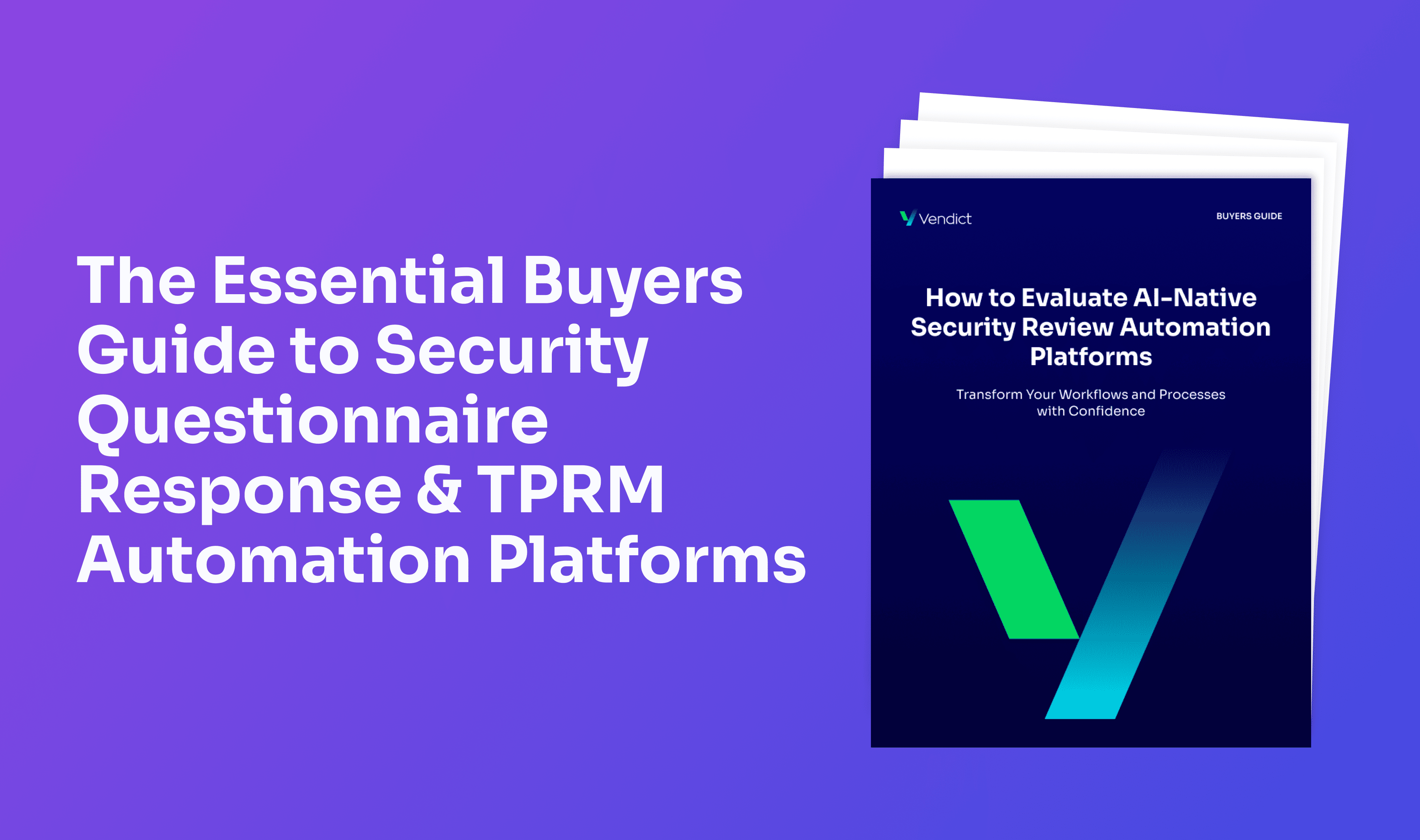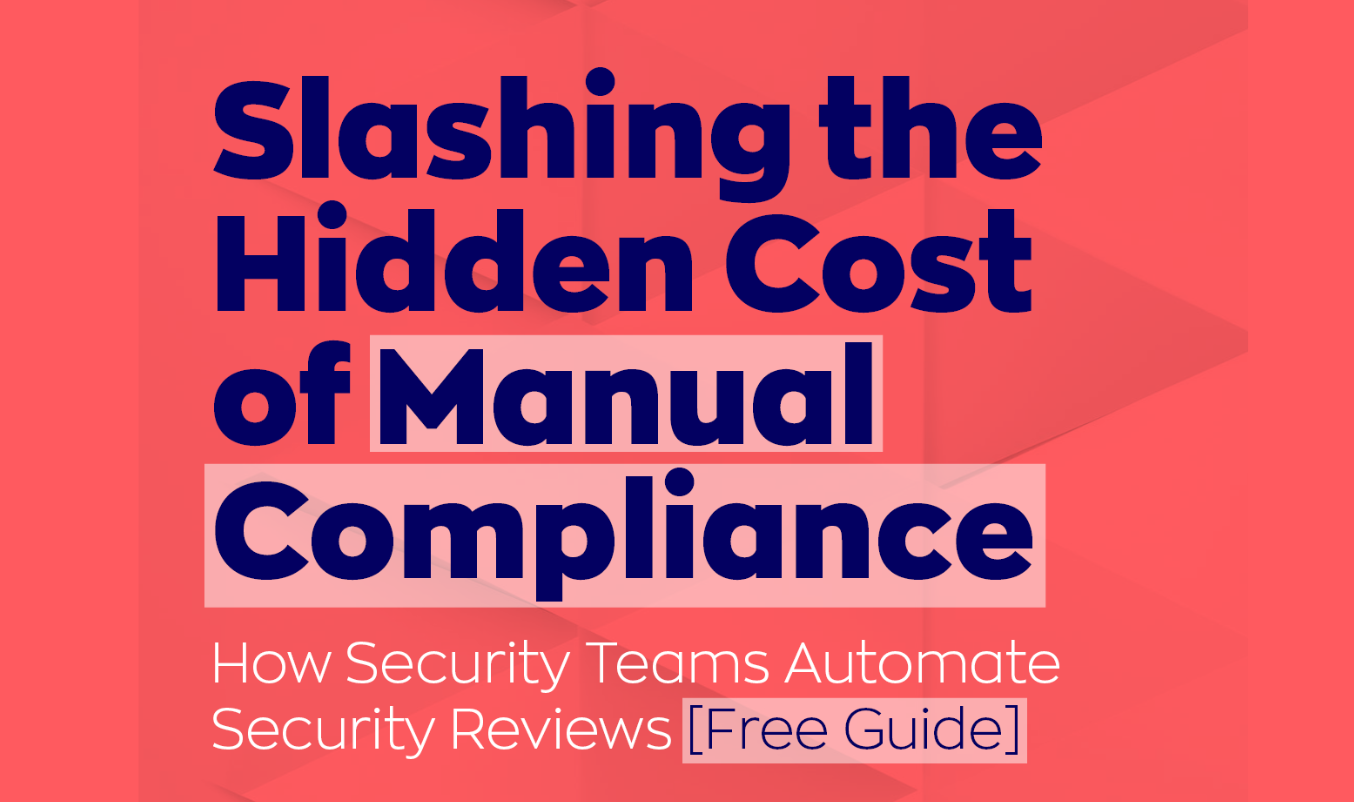Implementing Effective Third Party Risk Management: A Step-by-Step Guide

In today's interconnected business landscape, the intricate web of third party relationships plays a critical role in an organization's success. As companies expand their horizons, partnering with many third parties, the inherent risks also multiply. From emerging cyber threats to regulatory complexities, Third Party Risk Management (TPRM) addresses these challenges head-on.
TPRM is not just an administrative task—it's a strategic endeavor emphasizing building trust, protecting valuable data, and fostering sustainable growth. This guide delves into the nuances of TPRM, offering insights and strategies to help businesses strengthen their third party ties and navigate the multifaceted challenges they present.
Why is Third Party Risk Management Important?
Third Party Risk Management (TPRM) is essential for businesses aiming to safeguard their operational integrity and uphold their reputation. Companies face heightened cybersecurity threats as the digital landscape expands, necessitating third parties to maintain rigorous cybersecurity practices.
However, the significance of TPRM extends beyond just technological considerations. It encompasses the protection of data, a critical asset in today's corporate environment. Even a slight data breach can adversely affect an organization's financial standing and brand credibility. Additionally, adhering to diverse regional regulations becomes imperative as businesses operate globally.
Third parties play a pivotal role in this context. As organizations grow and their reliance on third parties increases, ensuring that they adhere to established standards in both performance and ethical conduct is paramount. Any deviation by the third parties can reflect negatively on the partnering company, emphasizing the critical role of a robust TPRM strategy.
Main Types of Third Party Risks
Collaborating with third parties is a strategic move in today's modern business, yet it introduces various risks. Here's a detailed breakdown:
- Cybersecurity Risks: Cybersecurity threats have diversified. From sophisticated ransomware that can cripple entire networks to deceptive phishing attempts aimed at individual employees, the spectrum is vast. Ensuring third parties employ robust cyber defenses is a frontline defense against such threats.
- Reputational Risks: The actions of a third party can significantly impact a company's public perception. A delay in service delivery, a lapse in quality, or any ethical breaches can put an organization in a challenging position, potentially losing customer trust and business opportunities.
- Compliance and Regulatory Risks: As regulatory scrutiny increases, third parties must be aware of and compliant with local and international regulations. Non-compliance can lead to legal actions, fines, and damage to reputation.
- Financial Risks: A third party's financial health can have ripple effects. If a third party faces financial strain or even bankruptcy, it might result in disruptions in supply chains, potentially increasing costs or causing project delays.
- Operational Risks: Operational efficiency is key. If a third party experiences disruptions due to internal challenges or external factors, it can directly impact the services or products they provide to businesses.
- Data Protection and Privacy Risks: Data breaches are becoming increasingly common, and mishandling of data by third parties can lead to significant breaches, exposing sensitive information and putting companies at risk of legal actions and loss of trust.
Being well-versed in these risks allows businesses to strategize more effectively, ensuring third party relationships bolster the organization rather than introduce vulnerabilities.
Steps for Implementing an Effective Third Party Risk Management Program
Implementing a TPRM program can seem daunting, but with a structured approach, it becomes manageable. Here's a detailed step-by-step guide:
Step 1: Define Objectives and Scope
Start by clearly outlining what you aim to achieve with the TPRM program. Understand the depth of third party interactions and set clear boundaries for the program's reach.
Step 2: Create a Third Party Inventory
List out all your Third Parties. Catalog them based on the services they provide, the criticality of those services to your operations, and the potential risks they might pose.
Step 3: Conduct Comprehensive Risk Assessments
Dive deep into each third party's operations, understanding their business ethos and potential vulnerabilities. Use standardized assessment tools to ensure consistency.
Step 4: Categorize Third Parties Based on Risk
Classify third parties into categories like high-risk, medium-risk, and low-risk. This allows for resource allocation where needed most and sets the tone for the assessment depth required.
Step 5: Perform Third Party Due Diligence
Beyond just understanding potential risks, get a holistic view of the third party's operations, history, and track record. This can provide insights into their reliability and trustworthiness.
Step 6: Continuous Monitoring
The business landscape evolves, and so do risks. Implement tools and practices for ongoing third party performance and risk profile monitoring.
Step 7: Establish an Incident Reporting Mechanism
Have a system for third parties to report any incidents or potential issues. This acts as an early warning system, enabling timely interventions.
Step 8: Iterate and Improve
TPRM isn't a one-time activity. Regularly review and update your TPRM practices, learning from past experiences and adapting to new challenges.
By following this structured approach, businesses can ensure their TPRM program is robust and adaptable, safeguarding them from potential third party-induced vulnerabilities.
The Best Practices in Third Party Risk Management Implementation
Ensuring effective TPRM hinges on adopting tried and tested best practices. These practices not only mitigate risks but also optimize third party relationships. Here's a guide to best practices in TPRM:
- Risk-Based Approach: Prioritize resources based on the risk a third party might pose. This means that third parties with higher potential risks should be given more attention, ensuring that potential vulnerabilities are addressed proactively.
- Clear Policies and Procedures: Establish unambiguous guidelines. This streamlines the TPRM process and ensures that everyone, from internal teams to third parties, understands their roles and responsibilities.
- Standardized Assessments: Use consistent tools and metrics for evaluating third parties. This provides a uniform yardstick, allowing for easier comparison and more objective evaluations.
- Third-Party Verifications: Consider external audits or assessments. An unbiased external review can validate a third party’s claims and provide an additional layer of assurance.
- Identify and Address Weak Links: Every third party ecosystem has its vulnerabilities. Proactively identifying and addressing these weak points can prevent potential risks from escalating.
- Contractual Protections: Incorporate TPRM considerations into third party contracts. This legal foundation ensures third parties are obligated to meet the standards set out, adding an extra layer of security.
Adhering to these best practices ensures a robust and resilient TPRM program, safeguarding organizations from potential pitfalls while maximizing the benefits of third party partnerships.
How Can You Automate Third Party Risk Management?
Leveraging technology in TPRM has become a game-changer, introducing efficiency and precision to processes. Automated tools for third party risk assessments stand out, using standardized metrics to evaluate third parties consistently. This approach reduces human error and bias, ensuring timely and dependable evaluations.
Algorithm-driven third party risk scoring systems further enhance the TPRM process. By ranking third parties based on specific criteria, these systems offer a clear view of third party performance, helping businesses make informed decisions.
The immediacy of real-time alerts also plays a crucial role. By instantly flagging deviations or potential risks, these alerts empower businesses to act swiftly, mitigating risks before they escalate. As businesses juggle multiple third party contracts, the value of a centralized contract management system becomes evident. Such systems streamline the oversight process, easily tracking contract terms, renewal dates, and compliance requirements.
In today's data-driven world, AI-powered analytics tools are indispensable. They dive deep into vast datasets, presenting actionable insights. This shifts the TPRM approach from being reactive to proactive, anticipating and addressing potential challenges. With automated reporting, businesses always have an up-to-date view of their third party landscape, ensuring they're always a step ahead in their TPRM strategies.
With these automation strategies in place, TPRM becomes a dynamic, robust, and agile process primed for the challenges of the digital age.
Vendict’s Solution for Third Party Risk Management
Vendict is at the forefront of revolutionizing TPRM with its AI-driven approach. Beyond just automation, Vendict's solution offers a tailor-made service designed to ensure robust and adaptive security for businesses, significantly enhancing their security posture. What truly sets Vendict apart is its innovative capability to accelerate the security questionnaire process. By eliminating third-party dependencies, businesses can receive responses ten times faster.
The Bottom Line
At its core, TPRM is an essential component that bolsters the modern business framework. Executed correctly, TPRM can unlock significant business value, acting as a strategic cornerstone. As industries continue to evolve, facing many challenges and opportunities, TPRM is a guiding force, navigating businesses safely in this dynamic environment.
Leveraging cutting-edge tools ensures enduring success and adaptability. Solutions like Vendict's, for instance, enhance security postures by streamlining the security questionnaire process and providing continuous, evidence-based monitoring. In a rapidly changing world, such advanced tools and strategies are pivotal for ensuring business adaptability and longevity.
.png)





.png)




.png)